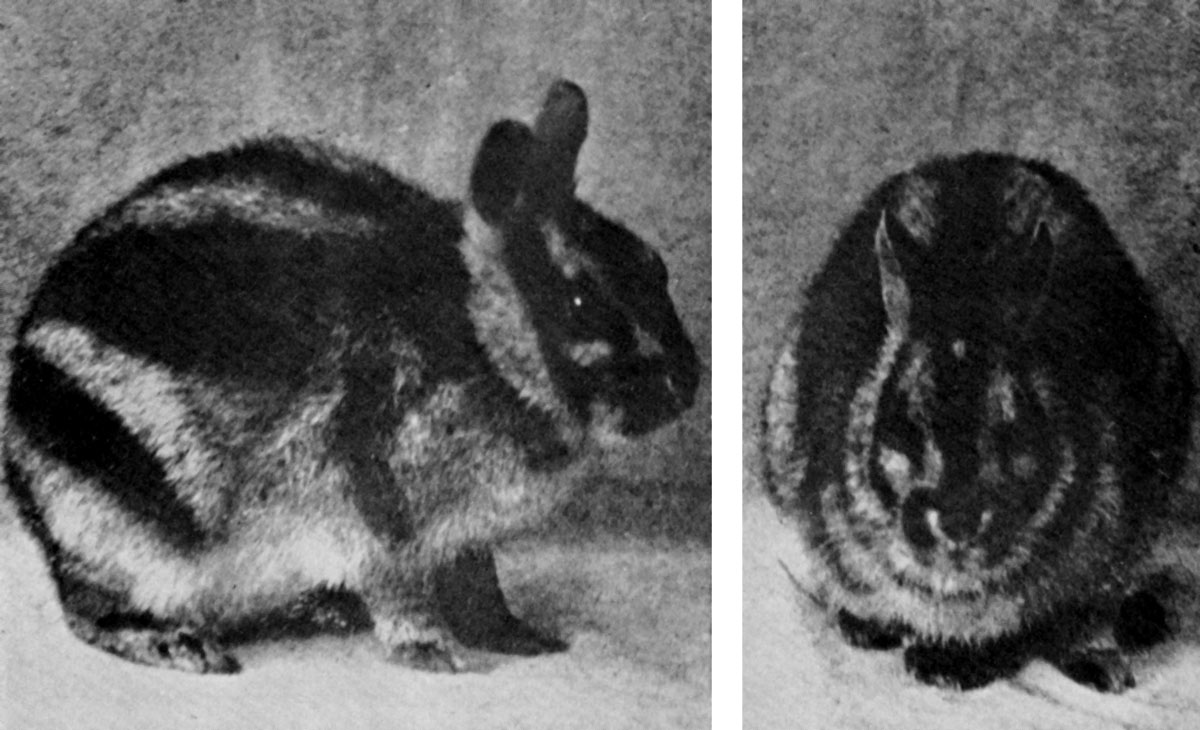The World’s Rarest Rabbit
The disappearance of Nesalogus netscheri
Jeffrey Kastner
In 1880, the German-born naturalist Hermann Schlegel published the first description of a kind of rabbit he called Lepus netscheri in the Notes of the Leyden Museum. Reclassified as Nesalogus netscheri nineteen years later, the animal—commonly known as the Sumatran short-eared rabbit—has been infrequently recorded in the years since. Just thirteen museum specimens are known to exist, all of which were apparently collected in the first two decades of the 20th century. There has been only one confirmed sighting by scientists since then, in 1972, although in November of 1997, an automatic camera trap set at 2300m elevation in the Kerinci Seblat National Park did manage to capture an image of a single individual. Today N. netscheri is considered to be the world’s rarest rabbit.

Typically weighing less than four pounds and characterized by a distinctive pattern of brown and gray stripes and a reddish rump, the small animal’s regular range is believed to be restricted to the remote montane forests of the Barisan Range in southwestern Sumatra, although the last scientifically verifiable sighting actually occurred some 500 miles to the north in Mt. Leuser National Park. The information that exists on N. netscheri suggests that it is entirely nocturnal, spending its days concealed in burrows made by other animals and coming out only at night to feed on low-lying forest vegetation. The very few individuals ever to be held in captivity, however, were reported to prefer cooked rice, young maize, bread, ripe bananas, and pineapple.
The 2000 IUCN/World Conservation Union Red List classifies the Sumatran short-eared rabbit as “Critically Endangered,” its most urgent category, reserved for species “facing an extremely high risk of extinction in the wild in the immediate future.” With its habitat rapidly being turned over to cultivation, primarily of tea and coffee, N. netscheri’s area of occupancy is today estimated to be less than 10 km2; its population is thought to be “severely fragmented or known to exist at only a single location” and to be declining in all its aspects. IUCN data places the rabbit in a category for taxons with between 0 and 250 mature individuals in total—but given the paucity of reliable documentation over the last three decades, it seems safe to assume that the number is likely on the low end of that scale.
Nesalogus netscheri. Lepus netscheri. The Sumatran short-eared rabbit in the Latin of the continental scientists who located it—named and possessed, named and lost. “Kelinci Hutan,” “Kelinci Kerinci,” or “Kelinci Sumatra” in Bahasa Indonesia, the official language of the polyglot country of which its habitat is a part. Meanwhile, the local population in the area of Kerinci Seblat has been said to be unaware of the animal and to have no name for it in their language.
If an animal falls in the forest and no one is there to hear it, does it make a sound? The study of nature, like nature itself, is fraught with indeterminacy. N. netscheri obviously existed long before it was discovered and classified; perhaps it even had a name in the local dialect, one now forgotten. Yet in some sense, it took its place in human consciousness—as represented by our porous, contradictory, communal collection of linguistic, scientific, and cultural knowledge—only when it was found and named. Now it falls in line, like countless other creatures before it, on the brink of extinction. And as it threatens to disappear as an organism from its terrestrial habitat, it increasingly comes to reside wholly within this matrix of knowledge—both its factual essence and physical substance transferred increasingly to the landscape of text and image, conveyed exclusively within the topographies of the specimen drawer.
Jeffrey Kastner is a New York–based writer and an editor of Cabinet.
Spotted an error? Email us at corrections at cabinetmagazine dot org.
If you’ve enjoyed the free articles that we offer on our site, please consider subscribing to our nonprofit magazine. You get twelve online issues and unlimited access to all our archives.